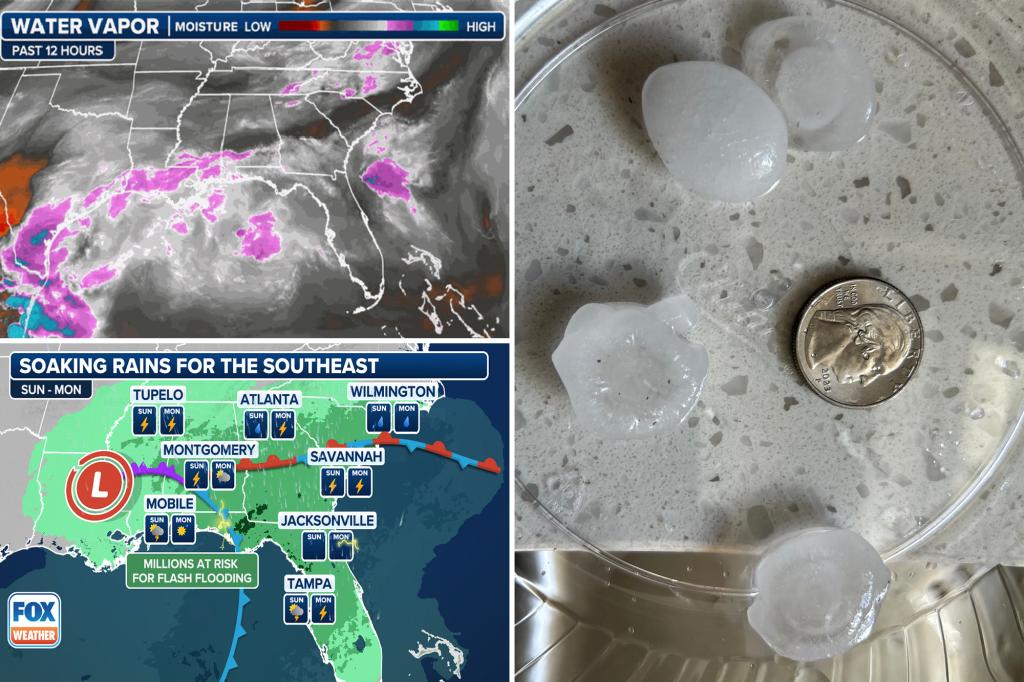Unprecedented Rainfall Looms: Gulf Coast and Southeast Face Severe Flooding Threat
A powerful weather system is poised to unleash torrential rainfall across the Gulf Coast and Southeastern United States this week, with meteorologists warning of potential life-threatening flooding. Starting Wednesday, the slow-moving storm could dump 10-15 inches of rain in some areas, overwhelming drainage systems and threatening vulnerable communities. Authorities urge residents to prepare emergency kits and evacuation plans as the National Weather Service issues flood watches for five states.
Meteorological Breakdown: A Perfect Storm for Flooding
The approaching system combines three dangerous elements: a stalled frontal boundary, tropical moisture from the Gulf of Mexico, and an unusually persistent atmospheric pattern. “This setup checks all the boxes for extreme rainfall events,” explains Dr. Elena Rodriguez, senior climatologist at the University of Louisiana. “We’re seeing moisture levels 200% above normal for this time of year, with virtually no steering currents to push the storm along.”
Key risk factors include:
- Rainfall rates exceeding 2 inches per hour in concentrated areas
- Consecutive days of precipitation saturating the ground
- Storm surge potential along coastal Louisiana and Mississippi
- Possible tornado spin-offs in eastern Texas and Alabama
High-Risk Areas and Vulnerable Communities
The flood threat spans from Houston to Tallahassee, with these regions facing particular danger:
Urban flood zones: New Orleans’ aging pump system, still recovering from 2021’s Hurricane Ida, may struggle to handle the deluge. City officials have activated emergency protocols, including pre-positioning high-water rescue vehicles near historically vulnerable neighborhoods like the Lower Ninth Ward.
Rural watersheds: The Pearl River basin, which caused devastating Mississippi flooding in 2020, could surpass minor flood stages by Friday. Agricultural communities remain especially concerned about crop losses, with soybean and cotton fields already waterlogged from spring rains.
Emergency Preparations Underway
Local governments have taken proactive measures:
- Louisiana deployed 250 National Guard troops for potential evacuations
- Mobile, Alabama opened six sandbag distribution centers
- Texas activated its statewide emergency operations center
“We learned hard lessons from past events,” says Harris County (TX) Emergency Manager David Chen. “This time we’re coordinating shelter locations with school districts and running multilingual PSAs about flood risks.” The region’s hospital systems have also implemented emergency power protocols, recalling Hurricane Harvey’s catastrophic healthcare facility failures.
Climate Change Connection: A Growing Pattern
This event continues a troubling trend—the Southeast has seen a 35% increase in heavy precipitation days since 2000 according to NOAA data. Climate models suggest such events will become 40% more frequent by 2050 as warmer air holds more moisture. “What were once 100-year storms now happen every decade,” notes Rodriguez. “Infrastructure designed for 20th century weather patterns simply can’t cope.”
Economic impacts could be severe. The 2022 Baton Rouge floods caused $2.3 billion in damages—a figure that may pale compared to this system’s potential toll. Insurance experts warn that many homeowners in high-risk areas lack flood coverage, having dropped policies after recent rate hikes.
Protecting Lives and Property: Expert Recommendations
Residents should take these immediate actions:
- Document property with photos/videos for insurance claims
- Elevate valuables in basements or ground floors
- Prepare a “go bag” with medications, important documents, and pet supplies
- Identify multiple evacuation routes as some roads may become impassable
Business owners face particular challenges. “Small enterprises often never recover from flood damage,” cautions Small Business Administration advisor Maria Gutierrez. “We’re urging owners to back up digital records offsite and review their business interruption coverage immediately.”
Long-Term Implications for Regional Planning
Beyond immediate response, this event raises difficult questions about sustainable development in flood-prone areas. Environmental groups argue for restoring wetlands that naturally absorb floodwaters, while developers emphasize improved drainage technology. Meanwhile, FEMA’s revised flood maps—still incomplete for many counties—leave homeowners uncertain about their true risk levels.
The coming days will test both emergency systems and community resilience. As the first bands of rain reach the coastline, officials stress that preparedness saves lives. “Heed evacuation orders immediately,” urges Chen. “Those six inches of water on the road could hide a washed-out section that puts you in mortal danger.”
For real-time updates, residents should monitor the National Weather Service website and local emergency management social media channels. Community organizations are seeking volunteers for flood response efforts—those able to assist can register through the American Red Cross portal.
See more Your Daily Weather



